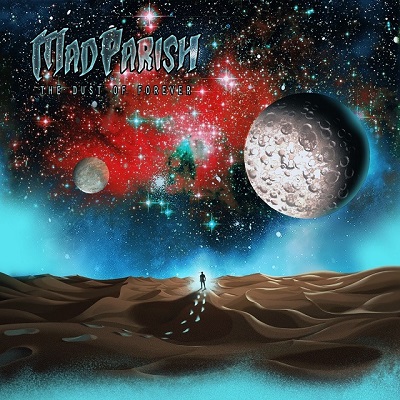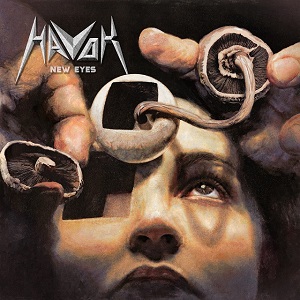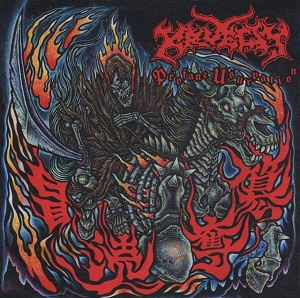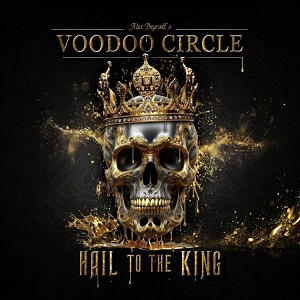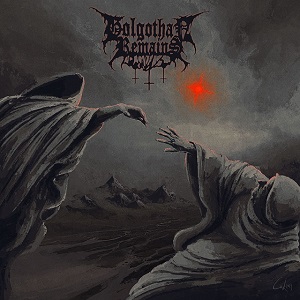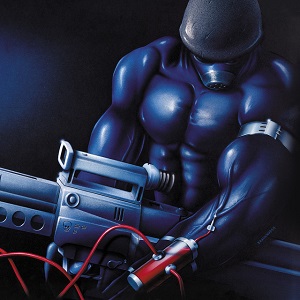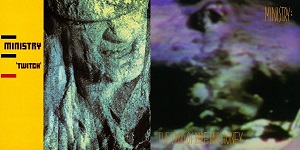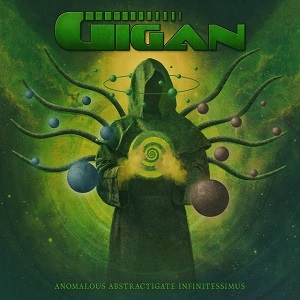BOSTON – Hyperspace Tour Is “One Giant Leap For Bandkind”
May 15, 2017, 7 years ago

Classic rock legends Boston have recently kicked off a cavalcade of tour dates that will take them through the summer. Deemed the Hyperspace Tour, the dates, come June 10th, will include Joan Jett and the Blackhearts, but it’s the immortal songs from 1976’s Boston and 1978’s Don’t Look Back that will really be headlining the show, as Tom Scholz, long-time co-guitarist Gary Pihl and band commandeer that guitar-shaped spaceship o’er summer sheds across Canada and the United States through July 30th.
“Well, of course, the Hyperspace tour... this is where no band has gone before,” chuckles Pihl (also a card-carrying member of well-regarded Christmas music act The December People), settling into press mode with an eye-wink. “Or to put it another way, it’s a small step for the band, but a giant leap for bandkind. No, but seriously, yes, I agree. We’re certainly going to play all those older hit songs that people love to sing along with. There’s no better feeling for us that to stand on stage, looking out at the audience and seeing people smiling and singing along, sometimes louder than the band—that’s great. And we’re also going to play some deep cut songs we haven’t played for a while. And also, of course, something from the Life, Love & Hope CD. Suddenly we like to play—and people seem to like—‘Life, Love And Hope’ and ‘Heaven On Earth’ from the new album.”
As for deep cuts from the original smash multi-platinum classics, one would think no stone has been unturned. However... “I know we’re going to throw in ‘Don’t Be Afraid,’ and what else from that one? (laughs). I’m blanking on the names; oh yes, ‘Used To Bad News’ should be there.”

Boston live is as serious about hi-fidelity sound as the legend has with respect to the headphone-sumptuous studio albums, so look for everything to ring through loud and clear. But just what is the Boston sound? We’ve had Tom articulate it for us more than a couple times over the years, so it was good to see what Gary had to say on the subject.
“Well, certainly the guitars and vocals, no question about that. And that’s, of course, Tom’s genius, in how he blends the guitars together, certainly with the double harmonies here and there, but also just the sound of them, along with the timbre of each individual instrument, and how they also blend together. It’s not just turn your guitar up to ten and let’s go. There’s a tonal quality that he looks for and achieves, both on record and live. But somehow it just blends together and works. And of course with respect to the vocals, all six of us sing, and we’re very proud of the fact we don’t use recorded tracks. There’s no back vocal track. That’s all us doing the singing. So if it sounds bad one night, that’s us sounding bad, you know? (laughs). We’ve got some great singers, and yeah, we’re proud of the fact that all six of us sing.”
As for what Scholz expects of Pihl as a guitarist, Gary figures, “Tom is like any other musician; when we’re playing harmonies, he wants to make sure that we’ve got it right.
“But he’s not so strict to say, ‘Okay, you’ve gotta do it my way here; do this like that.’ It’s like whatever way we do it, we just gotta do it the same. If I’m playing the part, he’ll say, ‘Look, I’ll do it your way,’ or conversely, ‘Try it this way or whatever.’ And of course, during songs like ‘Walk On,’ it’s free-form. You know, go ahead, do whatever you want in this section. So that’s the song where we all get a chance to improvise.”
“Tom is one of the best,” continues Phil. “When they put together those lists of the hundred greatest guitar players of all time, he’s always on there. But he’s also on the list of the hundred greatest keyboard players of all time. And there’s nobody else in the world that’s on both those lists. So he’s certainly unique. He’s got his own sound. People of course tell me, who’ve seen us live, they say, ‘Well, it sounded just like the record’ or, ‘It sounded better than the record.’ And people also say, ‘When the record comes on the radio, from the first two notes I know that’s Boston—that’s the Boston sound.’ So yeah, he’s definitely got it.”
The guys have it well worked out when it comes to equipment as well (Pihl and Scholz are huge students of sound, complete gearheads, as it were). “I would just assume that he’d always want to use a Rockman amp, because that’s the ones he designed and built. But no, even on the last album here, he said, yeah, use whatever amp you want. And so I have a tremendous amount of freedom there. Now of course, I think I know the sound he’s going for, and it’s in the palette of rock music, so it’s not like I’m coming with a country-western sound that’s not going to fit the song. I think I’m in the ballpark at least.”
Pihl’s and Scholz’s shared obsession with sound goes way back, and was likely part of the reason Gary ended up in Boston, coming on at the tail end of the sessions for the band’s third album, Third Stage.
“Actually, yeah, so I joined Sammy Hagar’s band in 1977, and one of the first things we did was to open up the end of Boston’s first tour. So we did about half, oh, about a dozen or so shows, and he liked us. And Sammy’s manager knew their manager—that was the point of connection. So we liked them and they liked us, and he said, ‘You guys should open the entire second tour for us.’ And that’s what we did, ‘78, ‘79, played all across the country. And so that’s when I got to know Tom. And you’re right, I’m a gearhead too, so I’d be asking him question like, ‘Hey, what’s that over there? How did you get that sound? What’s this thing here?’ And he was nice enough to tell me some of the electronic things he was working on and inventing at the time. So we kept in touch, and I even went to the NAMM show. That’s the National Association of Music Merchants where electronics companies debut new equipment. And it’s not open to the public, just open to music stores. So again, Tom had formed his own company by then, Scholz Research & Development, and had new products, and he asked me to demonstrate some of his gear. And that’s when I was still in Sammy’s band. And when Sammy was called to join Van Halen, Tom said, ‘Hey, I hear you’re out of a gig; why don’t you come in and help me finish the third album?’ And of course I was thrilled with that and said absolutely, and I’ve been here ever since.”
Always a touchy subject, I had to get Gary’s take on the curious drum machine vibe of the band’s recent couple of albums, something that has driven this listener—as well as many buddies I’ve talked to about it—to distraction...
“Tom always plays drums,” explains Pihl, “whether it’s a sampled sound or real drums, because he can play himself. So sometimes he will play the parts, and sometimes he will have any number of our drummers play the song too. So the sounds have sometimes, you know, been recorded and now sampled and played back again. But it’s a real performance. And all you have to do is put a metronome to any Boston song, and you’ll see, well, that’s not a drum machine, because it is not accurate 4/4 timing, 122 bpm. It is not accurate. Because it’s a real feel there. So, electronically, things change, between the drum itself, and the microphone and the processor, to try to get a take. But yeah, it’s a real performance.”
So what Gary is saying, is that Tom is using a considerable amount of labour and precision, working with real drums, to wind up with this processed sound, which is obviously exactly what Tom wants to have on the record—whether we like it or not.
“Again, he’s got a certain sound in his head for the drums, and it’s a fully processed kind of sound. Just like the guitar, really—in my mind, it’s really the same thing. Okay, we’re going to take the raw electric guitar sound, which, again, by itself is kind of bland. But he runs it through an amp and compressors and EQ and maybe some other effects, and now you’ve got a Boston sound. So in my mind it’s the exact same thing. You take the raw drum, which by itself may sound kind of bland, and then he’ll process it to get the sound, to make it fit with the rest of the sounds that he is looking for.”
In closing I had to ask, how did Gary find out Sammy was jumping ship to Van Halen?
“I remember Sammy telling us about that. He talks about this; I think it’s public knowledge from him so I’m not giving anything away. You know, Sammy is a car aficionado. And so he had a Ferrari that he was taking to a mechanic, because you always gotta take those to mechanics to keep them tuned up. And it just so happened that Eddie Van Halen also had a high-end car. I don’t know if it was a Ferrari, but anyway, they shared the same mechanic—that was the point, and that’s how they ran into each other. And I think, if I’m correct, that Claudio was the mechanic’s name, and Eddie was talking about, ‘Yeah, our lead singer is leaving.’ They were going to have to find a new lead singer. And he said, ‘Well, you know, I work on a car for this other lead singer, Sammy Hagar; perhaps you’ve heard of him. So that’s the story I heard about how they got together.”
Check out BandBoston.com for tour dates, in progress as you read this and rollin’ on through the long hot summer, at minimum, up to the scheduled July 30th date in Bristow, Virginia.

